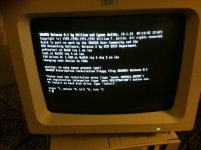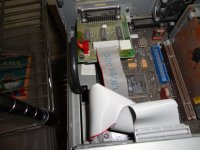Also, fun fact of the day for the PS/1: the 2011 and 2121 don't have a VGA controller.
They have an
SVGA controller - same one as used by the 8525SX. It's a pretty lame one, 640x480 256 colors is all she wrote, 800x600 isn't happening at all. There's a VESA VBE TSR for it, and there's apparently an OS/2 driver floating around (not that OS/2 works on a 2011 or 2121) thanks to the controller being used on some servers that ran OS/2 (as a cheap alternative to the XGA-2), but no Windows 3.x support was ever done for it.
The trick is that IBM only populated half of the VRAM on the PS/1... but note that there's solder pads for more.
In any case, with the stock VRAM, and a
VESA TSR intended for the Model 25SX, you can get 640x400 at 256 colors (which works quite well), and 132x25 text mode is also enabled (but I'm not yet sure if it works).





